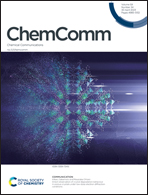Halide perovskites for sensitive, stable and scalable X-ray detection and imaging
Abstract
Halide perovskites have attracted significant research interests in the X-ray detection and imaging field. Their strong X-ray attenuating ability and good carrier transportation endow them with high sensitivity, which is better than those of commercialized amorphous selenium (a-Se) and CdZnTe (CZT). However, ion migration has been identified as a critical factor that deteriorates the performance of three-dimensional (3D) lead-based halide perovskite detectors. Moreover, large dark current has hindered their application in low-dose X-ray detection. Another major challenge is to fabricate large area, high-quality thick perovskites that can be integrated with commercial electronic readout backplanes, such as thin-film transistors (TFTs) and complementary metal-oxide-semiconductor (CMOS) transistors, to produce multipixel flat-panel detectors for X-ray imaging. Bismuth-based halide perovskites have been demonstrated to be competitive candidates due to their low ionic migration and small dark current. Fabrication methods, including pressing, membrane filling, blade coating, spray coating etc., will be summarized and discussed in detail. This feature article discusses the potential and challenges in perovskite X-ray detection and imaging, providing new research directions for future development.

- This article is part of the themed collection: Perovskites


 Please wait while we load your content...
Please wait while we load your content...